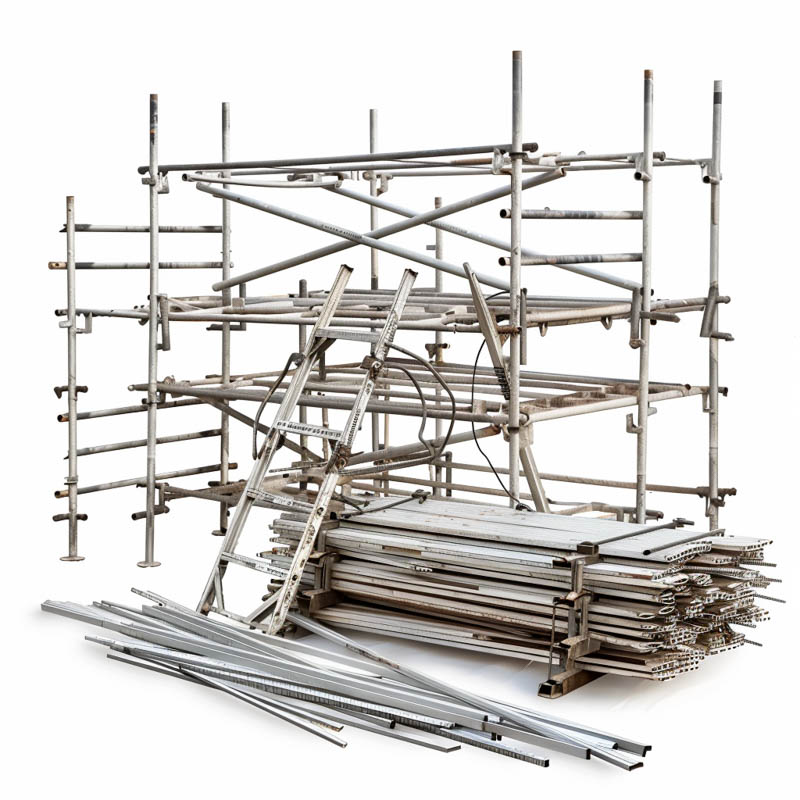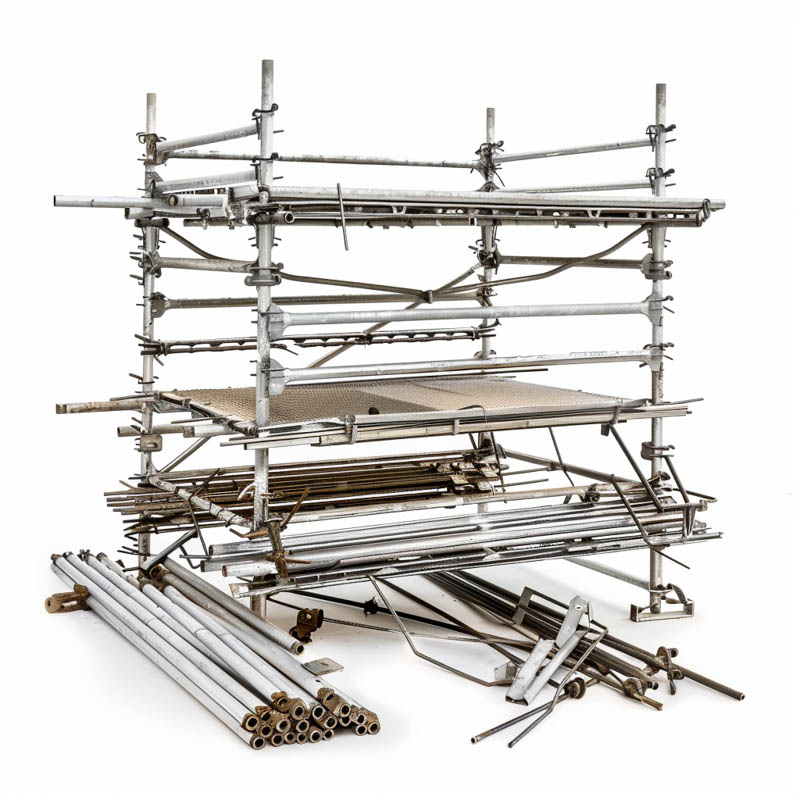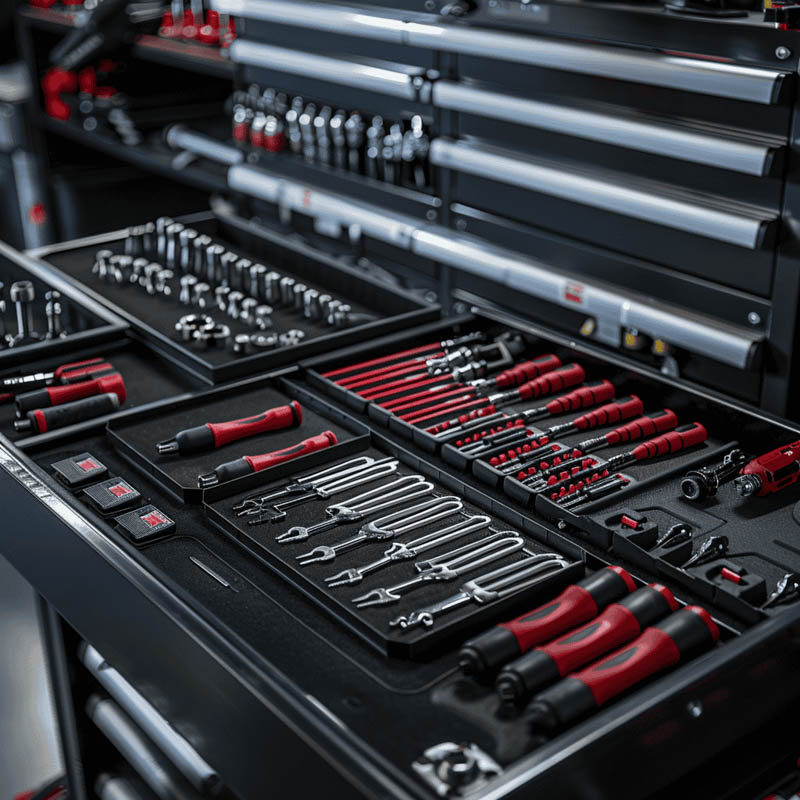Phone:
TBA
Physical address:
TBA
Scaffolding Maintenance Practices – Taking care of scaffolding is crucial for any construction or renovation job. You should routinely inspect foundations for stability and check frames for rust and damage. Ensure all guardrails, toe boards, and fasteners are secure. Cleaning is a must—use a power washer and mild detergent but avoid harsh chemicals on aluminum to remove dirt and debris. Always check the structural integrity, load-bearing parts, and welds, and log these inspections. For any damaged components, use manufacturer-approved replacements. Store scaffolding in a dry, sheltered area, and keep it organized. Following these tips will help you maintain safety and efficiency. Continue for a deeper understanding.

Routine inspections play a crucial role in ensuring your scaffolding’s safety and longevity. By regularly checking your scaffolding, you’re preemptively identifying potential issues that could lead to accidents or costly repairs. It’s not just about meeting regulatory requirements; it’s about protecting your workers and your investment.
To start, inspect the scaffolding’s foundation. Make sure it’s stable and level, as an uneven base can cause the entire structure to become unsafe. Look for any signs of soil erosion or water damage that could compromise stability. Next, move on to the scaffolding frame. Check for any signs of rust, corrosion, or physical damage. These can weaken the structure and pose serious safety risks.
Don’t forget to examine the connection points and fasteners. Loose or missing bolts and clamps can lead to structural failures. Tighten any that are loose and replace any that are missing or damaged. Additionally, ensure that all guardrails and toe boards are securely in place. They’re essential for preventing falls and keeping tools from dropping onto people below.
Also, pay attention to the planks and work platforms. They should be free from cracks, splits, and excessive wear. Any damaged planks should be replaced immediately to avoid any risk of collapse. Check that they’re properly secured and not prone to slipping.
Proper cleaning procedures are essential for maintaining the integrity and safety of your scaffolding. When you neglect cleaning, debris, dirt, and even corrosive substances can accumulate, which can compromise the structural soundness of the scaffolding. Start by removing all loose debris and materials from the platforms and frames. Sweep away dust and dirt with a sturdy broom, making sure to reach all corners and crevices.
Next, use a pressure washer to clean the scaffolding components thoroughly. The high-pressure water stream will effectively remove any stubborn grime or built-up substances. Make sure you use a pressure setting that’s strong enough to clean but not so strong that it damages the metal or protective coatings, especially when using a power washer. If your scaffolding is made of aluminum or has a protective coating, avoid using harsh chemicals that could erode the surface.
After pressure washing, inspect the scaffolding for any remaining spots that need attention. For particularly stubborn areas, you may need to use a mild detergent mixed with water and a soft brush to scrub away the grime. Once you’ve scrubbed these areas, rinse them thoroughly to ensure no soap residue is left behind, as this can attract more dirt over time.
When you’re checking scaffolding components, start by inspecting the structural integrity of all parts to ensure they’re free from damage or wear. Next, verify that all fasteners are secure and properly tightened to prevent any accidents. These steps are crucial for maintaining a safe working environment.

Regularly inspecting the structural integrity of scaffolding components is crucial for ensuring safety and preventing potential hazards due to deterioration. When you’re checking these components, you need to be thorough and methodical. Here’s a simple approach to help you get started.
Make sure all fasteners are secure, as loose or missing fasteners can jeopardize the entire scaffolding structure. You don’t want to overlook even the smallest bolt or nut; each one plays a crucial role in maintaining overall stability. Start by visually inspecting all fasteners, looking for any signs of wear, rust, or damage. If you spot any issues, replace the affected parts immediately.
Next, use a torque wrench to check that each fastener is tightened to the manufacturer’s specifications. Over-tightening can be just as problematic as under-tightening, so follow the guidelines precisely. Pay special attention to joints and connection points, as these are critical areas where fasteners tend to loosen over time due to vibrations, heavy loads, and load shifts.

Don’t forget to inspect the fasteners on adjustable components like braces and clamps to prevent problems under heavy loads. These parts are often subject to frequent adjustments, which can lead to loosening. Make it a habit to double-check these after any significant movement or repositioning of the scaffolding.
Lastly, keep a maintenance log to track inspections and any replacements. This not only ensures a systematic approach but also provides a reference for future checks. By diligently verifying fastener security, you’ll enhance the safety and longevity of your scaffolding setup. Go back to Scaffold for Hire Home Page.
To ensure the safety and longevity of scaffolding, you’ve got to master various repair techniques for addressing common issues and preventing deterioration. Scaffolding, like any other construction equipment, is prone to wear and tear. Knowing how to fix problems quickly can save time and prevent accidents.
First, let’s talk about replacement of damaged parts. If you notice any bent or cracked components, they’re not safe to use. Replace them immediately with parts that meet the manufacturer’s specifications to ensure proper maintenance. Never try to bend or weld parts back to shape, as this can weaken the structure.
Next, you’ll need to be adept at tightening loose fittings. Over time, nuts, bolts, and clamps can become loose due to vibrations and repeated use. Regularly check and tighten these fittings to ensure everything stays securely in place. Loose fittings can lead to unstable scaffolding, posing a significant risk to workers.


Lastly, consider the importance of rust treatment. Exposure to the elements can cause metal parts to rust, compromising the scaffolding’s integrity. Clean off any rust spots with a wire brush and apply a rust inhibitor to prevent further corrosion. For severe rust, it might be necessary to replace the affected parts entirely.
Here’s a quick recap of the key repair techniques:
Proper storage of scaffolding equipment is crucial to maintain its integrity and ensure it’s ready for safe use when needed. When you’re not using the scaffolding, it’s important to store it in a dry, sheltered area to prevent rust and other weather-related damage. Moisture can be particularly problematic, so make sure to keep the equipment off the ground on pallets or shelving units.
Organizing your scaffolding components can save you a lot of time and effort when you need to set them up again. Group similar parts together, like platforms, braces, and frames, for proper maintenance. Labeling these groups can also be helpful. This organization prevents you from wasting time searching for a particular piece and reduces the risk of mismatched or missing parts.
It’s essential to regularly inspect your stored scaffolding. Look for any signs of damage or wear, such as bent frames or corroded fasteners. If you spot any issues, address them immediately. This proactive approach ensures the equipment remains in good condition and avoids last-minute surprises when you need to use it during a construction project.
Don’t forget about the small parts like screws, nuts, and bolts. Store these in labeled containers to keep them from getting lost. A well-organized storage system for these tiny components can make a big difference in the efficiency of your setup process.
Ensuring that everyone follows established safety protocols is vital to prevent accidents and injuries when working with scaffolding. You can never be too careful when it comes to safety on a construction site. There are several key steps you should always take to ensure a safe working environment in any construction project.
You should replace scaffolding based on its condition and usage frequency. Regular inspections are crucial. Generally, every 5-7 years is recommended, but damaged or worn-out parts should be replaced immediately for safety.
When considering the costs associated with scaffolding maintenance, you’ll need to account for inspections, repairs, replacement parts, and labor. Regular upkeep ensures safety and longevity, but it’s vital to budget accordingly to avoid unexpected expenses and extend the lifespan of the equipment.
Yes, there are software tools for managing maintenance. You’ll find several options like Scaffold Designer, Avontus, and Safesite. These tools help in scheduling, tracking, and ensuring safety compliance efficiently across the construction industry. They streamline your maintenance processes significantly.
You can find qualified maintenance professionals by checking industry certifications, browsing online job platforms, and asking for referrals from colleagues. Don’t forget to verify their experience and read reviews from previous clients to ensure reliability.
You should consider factors like waste disposal, pollution control, and material sustainability. Ensure you’re adhering to environmental regulations and best practices to minimize your ecological footprint during scaffolding maintenance activities. It’s crucial to stay eco-friendly.